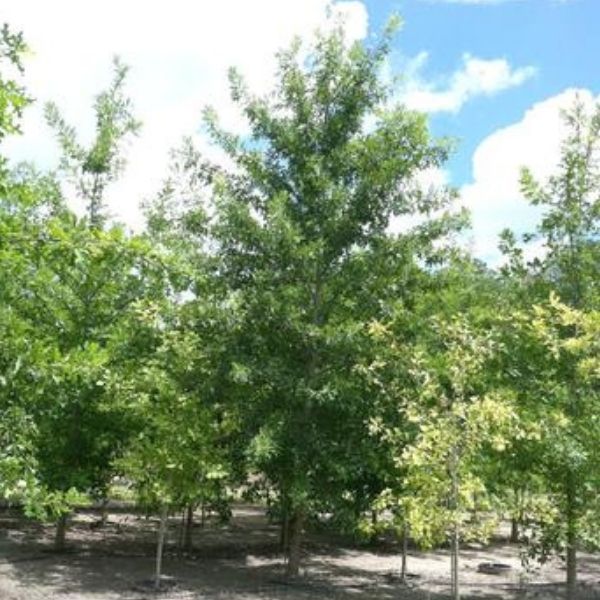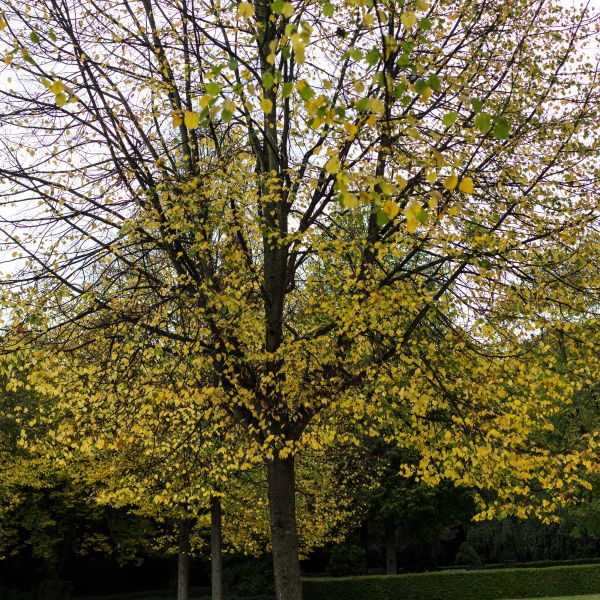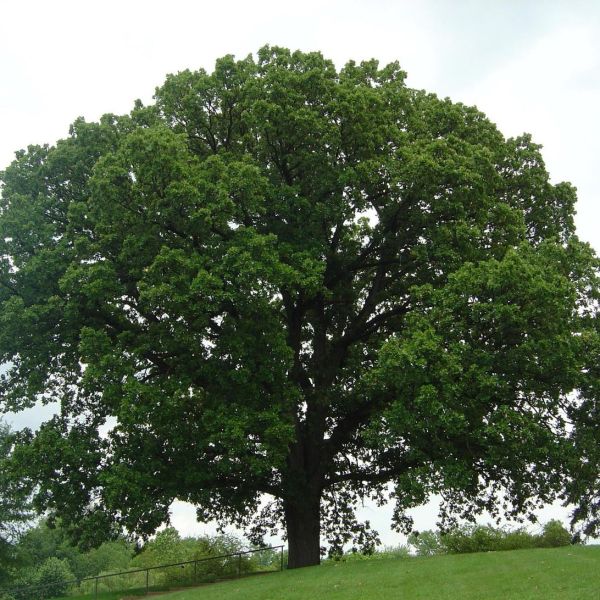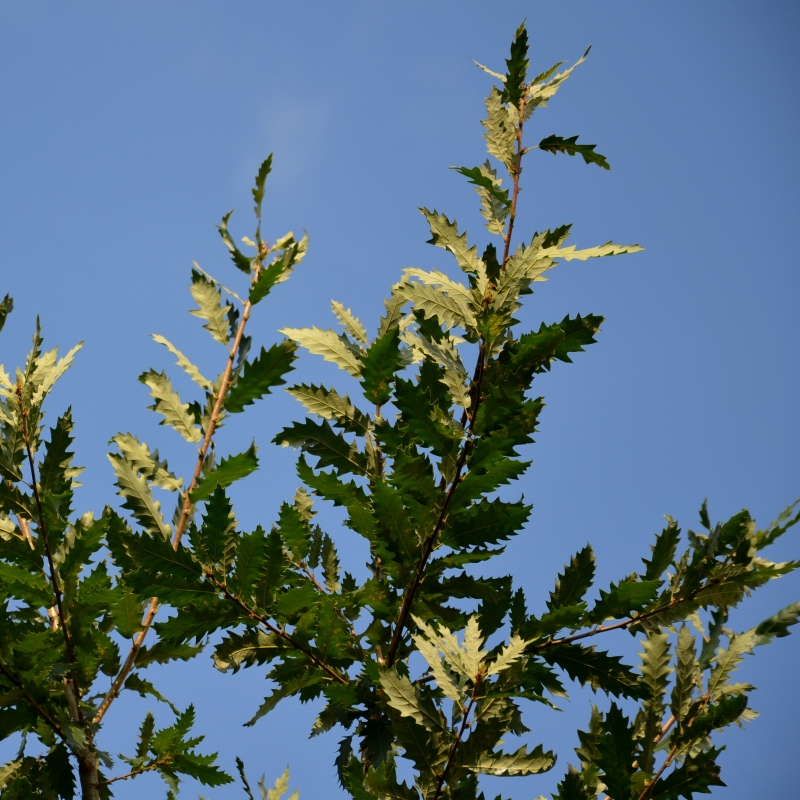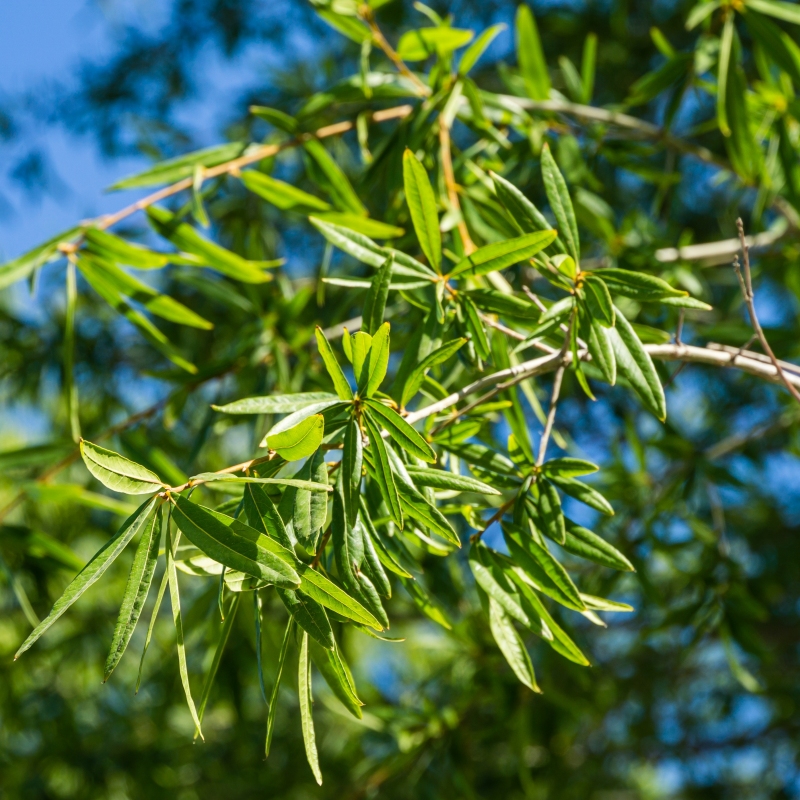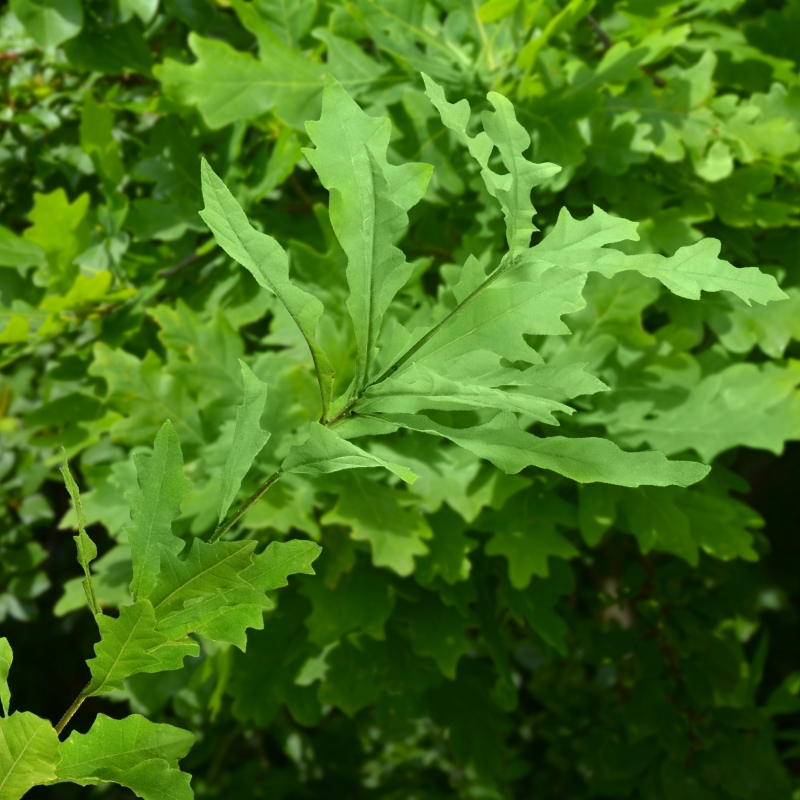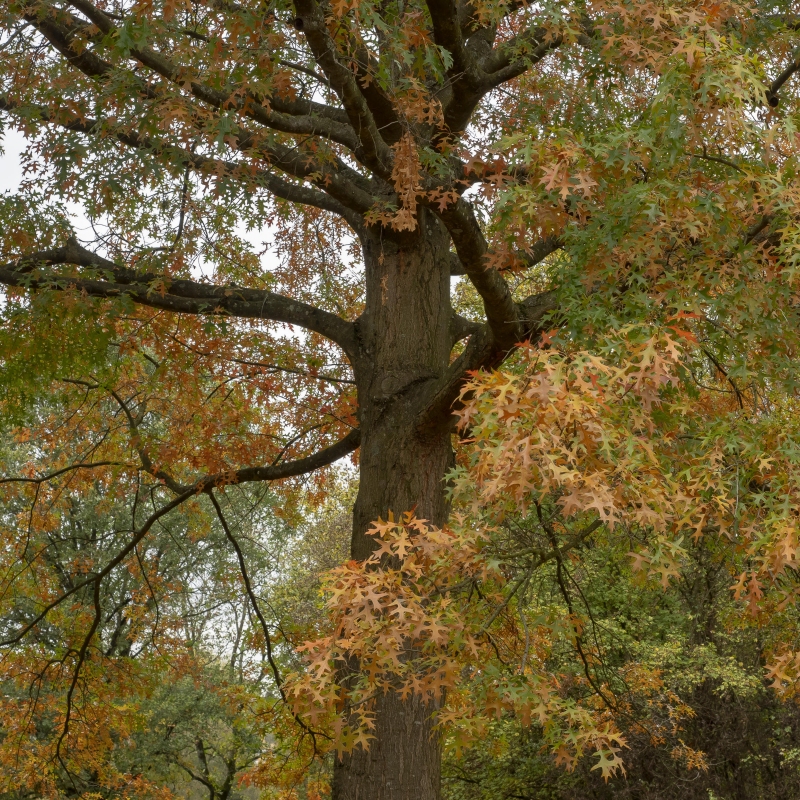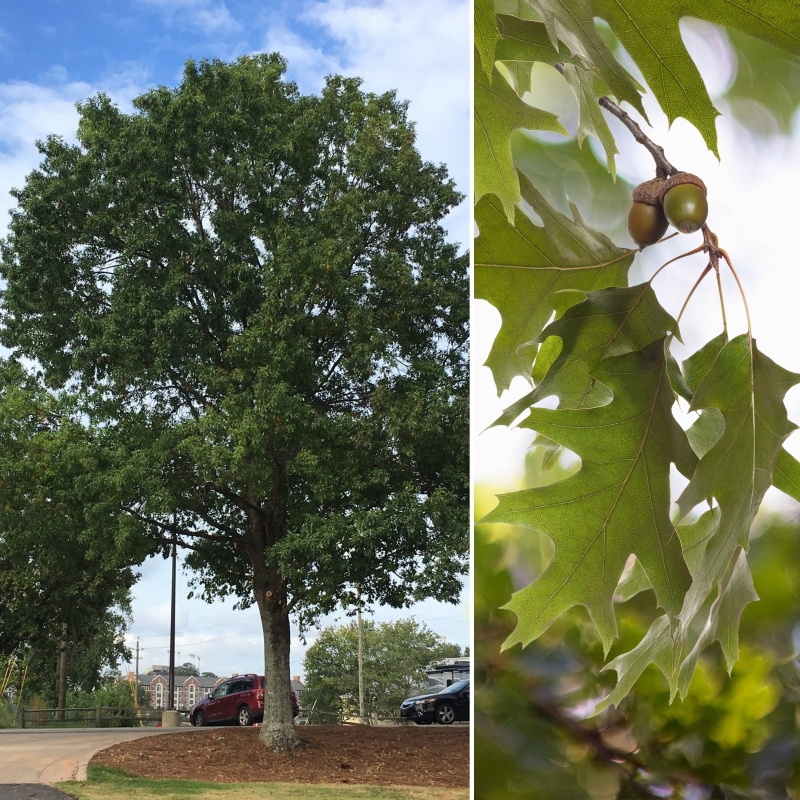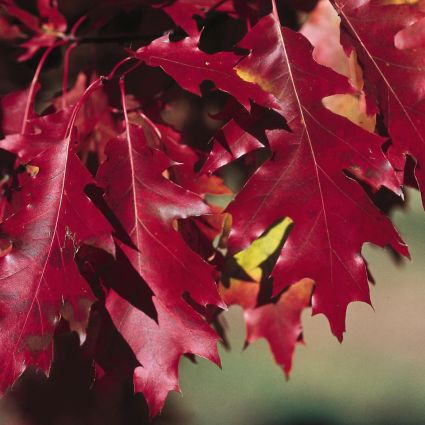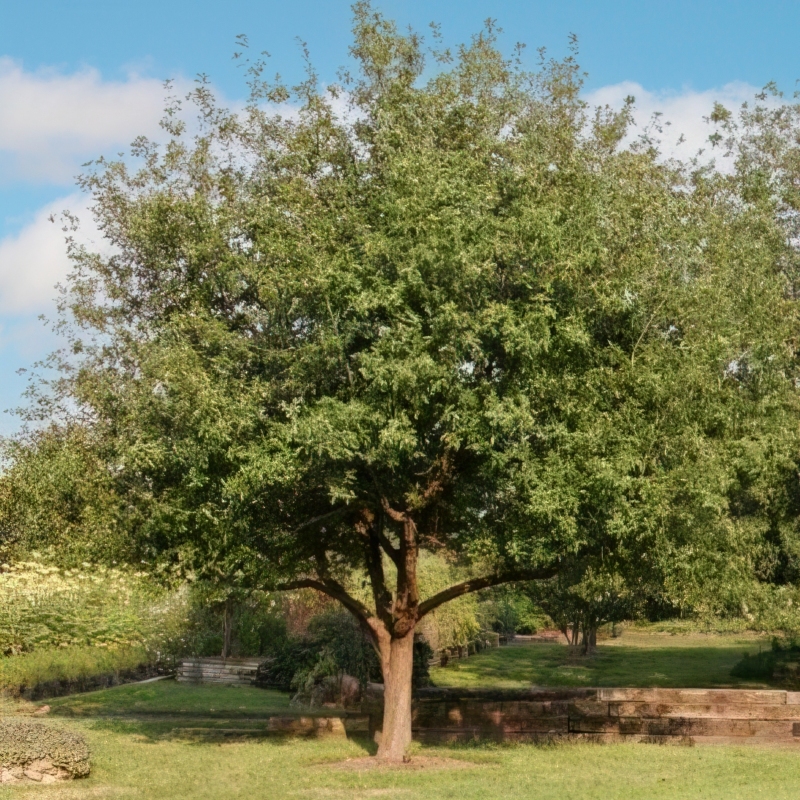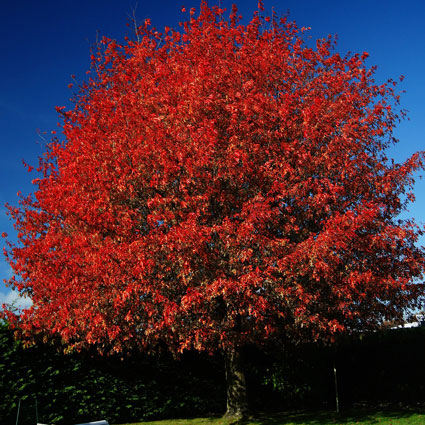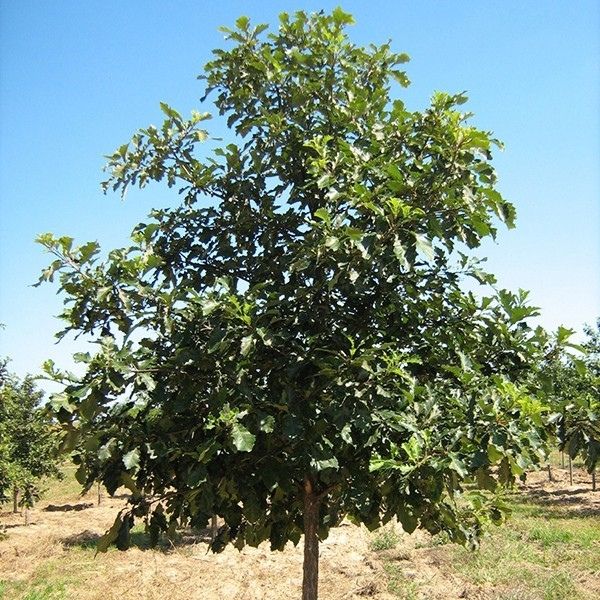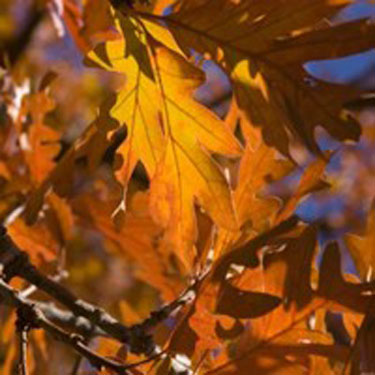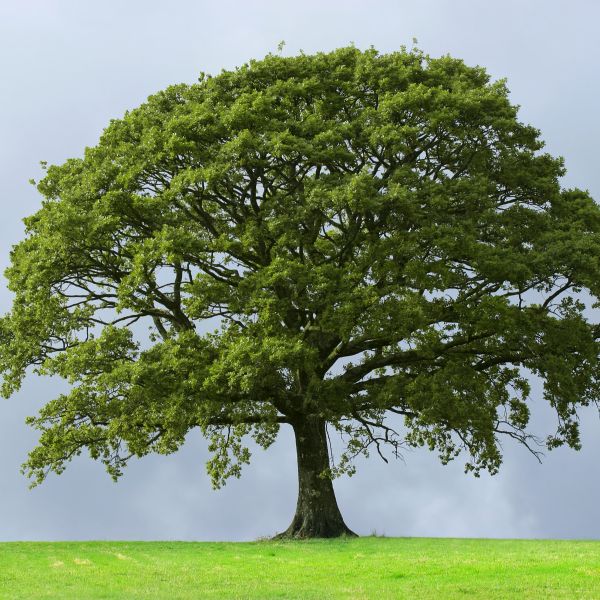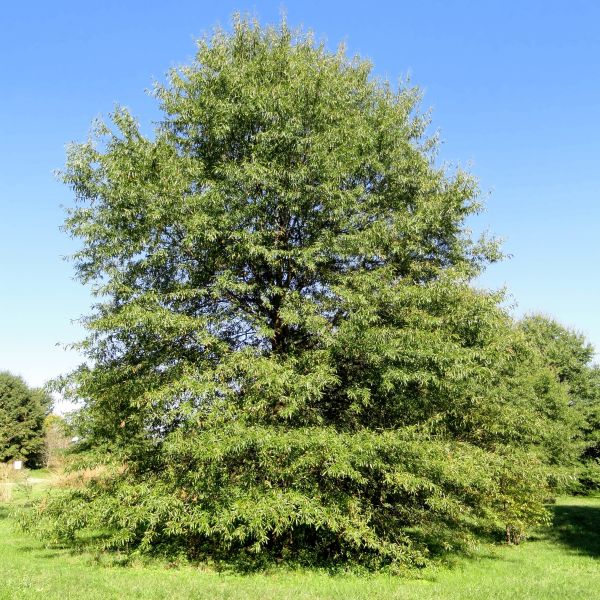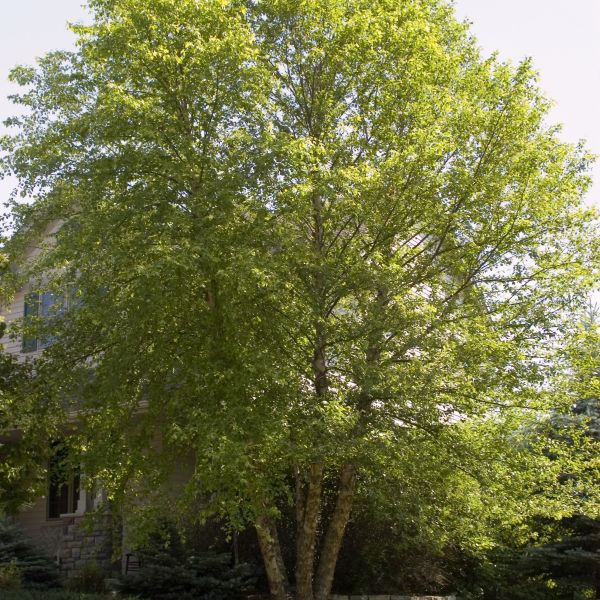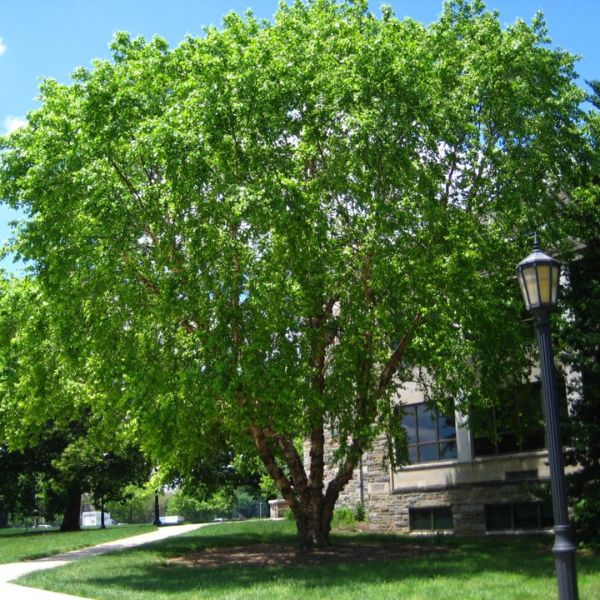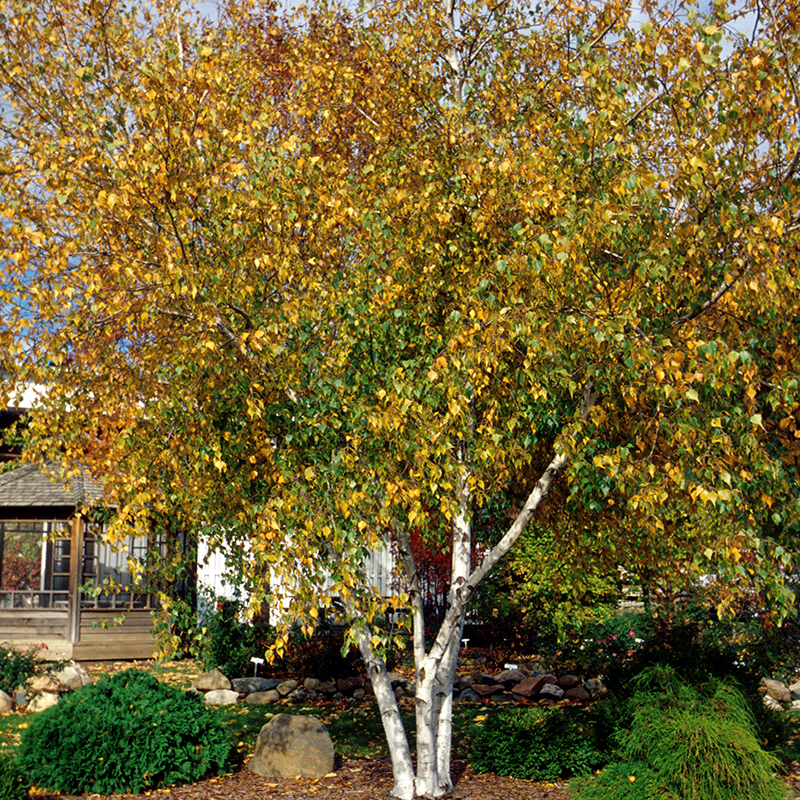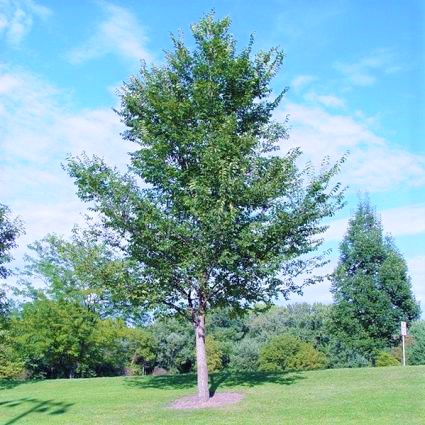Nuttall Oak
Quercus nuttallii
12 reviews
Nuttall Oak
Quercus nuttallii
12 reviews
- Fast-growing shade tree
- Tolerates wet soil conditions
- Beautiful fall color with red and orange foliage
- Ships in 3 to 7 days
- Free Shipping Over $150
- Plant Arrival Guarantee
- In Stock
$128.00
$140.8
10% Off
- 3.5 Gallon
- 2.5 Gallon 4-5 Feet
Why Nuttall Oak?
Nuttall Oak, scientifically known as Quercus nuttallii, is a deciduous tree native to the southeastern United States. It is named after Thomas Nuttall, an English botanist. This tree is known for its impressive size, reaching heights up to 100 feet tall. Nuttall Oak is commonly found in wet bottomlands and floodplains, and its acorns provide an important food source for wildlife.
People who loved this plant also bought
Sunlight
Nuttall Oak requires full sunlight to thrive and grow properly.
Watering
The watering requirement for Nuttall Oak trees is moderate. These trees prefer moist, well-drained soil but can tolerate periods of drought once established. They typically require watering about once a week during dry periods to maintain healthy growth an
Fertilizing
The fertilizer requirement for Nuttall Oak includes a balanced blend that provides essential nutrients such as nitrogen, phosphorus, and potassium. It is recommended to consult a local horticulturist or arborist to determine the specific fertilizer needs f
Nuttall Oak (Quercus nuttallii)
The Nuttall Oak, scientifically known as Quercus nuttallii, is a deciduous tree native to the southeastern United States. It is named after the English botanist Thomas Nuttall, who first discovered it in the early 19th century. This majestic oak tree is highly regarded for its ornamental qualities and its ability to provide ample shade.
Appearance
The Nuttall Oak typically grows to be a medium to large-sized tree, reaching heights of 40-60 feet with a spread of 30-40 feet. Its crown is wide and rounded, providing a generous amount of shade. The tree's bark is light gray with shallow fissures and furrows, adding to its overall aesthetic appeal.
The leaves of the Nuttall Oak are simple and alternate, with a typical length of 3-6 inches. They have a distinct shape, with 5-9 lobes that have rounded ends. The foliage is glossy green during the spring and summer, turning beautiful shades of red, orange, and yellow in the fall, creating a stunning display of autumn colors.
Preferred Habitat
This oak species thrives in a variety of soil types, including clay, loam, and sandy soils. It is commonly found in low-lying areas near stream banks, bottomlands, and floodplains. Nuttall Oaks are highly adaptable to various moisture levels, making them suitable for wetter regions.
Environmental Benefits
In addition to its visual appeal, the Nuttall Oak provides numerous environmental benefits. Its expansive crown offers excellent shade, which can significantly reduce energy costs for nearby buildings. The tree also provides habitat and food for a range of wildlife, attracting birds and squirrels.
Furthermore, Nuttall Oaks contribute to improving air quality by absorbing carbon dioxide and releasing oxygen. They also help in preventing soil erosion and improving water quality by filtering and purifying rainwater as it percolates through their root system.
Uses
The Nuttall Oak is highly valued in landscaping for its shade and ornamental qualities. Its dense foliage and attractive fall colors make it popular for parks, gardens, and along streets. The wood of the Nuttall Oak is heavy, strong, and durable, making it suitable for various woodworking projects such as furniture, cabinets, and flooring.
Overall, the Nuttall Oak is an excellent choice for those seeking a magnificent shade tree with beautiful foliage, environmental benefits, and versatility in both urban and rural landscapes.
Plant Information:
| Botanical Name: | Quercus nuttallii |
| USDA Zones: | 5-9 |
| Water: | Moderate |
| Exposure: | Full Sun |
| Soil Needs: | Acidic |
| Mature Height: | 40 - 60 feet |
| Mature Spread: | 25 - 35 feet |






Pollination Info
Pollination Info for Nuttall Oak (Quercus nuttallii)
Nuttall Oak (Quercus nuttallii) is generally a wind-pollinated tree species, which means that it relies on wind to carry pollen from male flowers to female flowers. However, Nuttall Oak also has small and inconspicuous flowers that provide pollen for various insect species. These insects can help enhance the pollination process by transferring pollen between flowers.
Flowing and Pollen Dispersal
The flowering period for Nuttall Oak usually occurs during early spring, typically in April or May. The male flowers, known as catkins, develop in clusters and release vast amounts of pollen into the air. The wind carries this pollen to the female flowers, which are comparatively small and located on different branches or nearby trees. Nuttall Oak exhibits a phenomenon called protandry, where male flowers mature before female flowers, ensuring cross-pollination between different trees.
Insect Visitors
While wind is the primary pollinator for Nuttall Oak, certain insect species can also contribute to pollination. Bees, including various solitary and social bees, may visit the flowers to collect pollen and nectar, inadvertently transferring pollen between male and female flowers. Other insects, such as beetles, moths, and butterflies, may also visit the flowers occasionally. However, insect pollination plays a minor role compared to wind pollination for Nuttall Oak.
Pollination Process
During wind pollination, the male flowers release abundant pollen grains into the air. These lightweight and powdery grains are carried by wind currents and can travel substantial distances to reach receptive female flowers. As the pollen grains land on the stigma of a female flower, they germinate and grow down a pollen tube, eventually reaching the ovary to fertilize the ovules. This process leads to the formation of acorns, the characteristic fruit of the Nuttall Oak.
Importance of Pollination
Pollination is crucial for the reproduction and survival of Nuttall Oak. Successful pollination ensures the production of viable seeds within the acorns. These seeds contribute to the regeneration and growth of Nuttall Oak populations, allowing the species to persist and thrive in its habitat.
FAQ
Nuttall Oak (Quercus nuttallii) - FAQ
General Information
-
What is Nuttall Oak?
Nuttall Oak (Quercus nuttallii) is a species of oak tree native to the southeastern United States.
-
How tall does Nuttall Oak grow?
Nuttall Oak trees can reach heights of 60 to 100 feet at maturity.
-
What is the lifespan of Nuttall Oak?
Nuttall Oak trees typically live for 80 to 120 years.
Propagation and Growth
-
How can I propagate Nuttall Oak?
Nuttall Oak can be propagated through acorns. Collect acorns in fall, remove their caps, and plant them in well-drained soil during winter.
-
What are the ideal growing conditions for Nuttall Oak?
Nuttall Oak thrives in moist, well-drained soils. It prefers full sun exposure but can tolerate partial shade.
-
How fast does Nuttall Oak grow?
Nuttall Oak is considered a fast-growing tree, with an average growth rate of 2 to 3 feet per year.
Care and Maintenance
-
Does Nuttall Oak require pruning?
Pruning Nuttall Oak is not necessary unless there are damaged or diseased branches that need to be removed. If desired, prune during late winter or early spring before new growth begins.
-
How often does Nuttall Oak need watering?
Once established, Nuttall Oak is relatively drought-tolerant and does not require frequent watering. However, during prolonged dry periods, deep watering once every 2-3 weeks can benefit the tree.
-
Are there any specific pests or diseases that affect Nuttall Oak?
Nuttall Oak is generally resistant to major pests and diseases. However, it can be susceptible to oak wilt and certain leaf diseases. Regular inspection and prompt treatment, if necessary, can help maintain tree health.
Ecological Importance
-
What wildlife does Nuttall Oak support?
Nuttall Oak provides food and shelter for numerous wildlife species, including birds, squirrels, deer, and various insects.
-
Is Nuttall Oak native to any specific regions?
Yes, Nuttall Oak is native to the southeastern United States, primarily found in low-lying areas near rivers, swamps, and bottomlands.
-
Does Nuttall Oak have any special environmental benefits?
Yes, Nuttall Oak helps to prevent soil erosion, supports clean air by absorbing carbon dioxide, and contributes to the overall health and biodiversity of the ecosystem.
Planting & Care
Planting and Care for Nuttall Oak (Quercus nuttallii)
The Nuttall Oak, scientifically known as Quercus nuttallii, is a large and beautiful deciduous tree native to the southeastern United States. It is a popular choice for landscaping due to its attractive foliage and ability to provide ample shade. Below are some guidelines for planting and caring for Nuttall Oak:
1. Choosing a Site:
- Ensure the planting site receives full sun to partial shade.
- Select a location with well-draining soil to prevent waterlogged roots.
- Make sure the site has enough space to accommodate the mature size of the tree.
2. Planting:
- Plant Nuttall Oak in early spring or fall when the tree is dormant.
- Dig a hole that is two times wider and slightly deeper than the tree's root ball.
- Place the tree in the hole, ensuring the root collar is level with or slightly above the soil surface.
- Backfill the hole with the excavated soil, gently firming it around the roots to eliminate air pockets.
- Water the tree thoroughly after planting.
3. Watering:
- Established Nuttall Oaks are generally drought-tolerant, but they benefit from regular watering during dry periods, especially in the first few years after planting.
- Water deeply, providing enough moisture to penetrate the root zone.
- Avoid overwatering, as it can lead to root rot and other diseases.
4. Fertilizing:
- Nuttall Oaks generally do not require fertilization if planted in nutrient-rich soil.
- However, if the soil is poor or lacking in essential nutrients, you can apply a balanced slow-release fertilizer in early spring.
- Follow the product instructions for the correct application rate.
5. Pruning:
- Prune Nuttall Oak during the dormant season to remove dead or damaged branches.
- Avoid heavy pruning, as it can affect the tree's structure and health.
- Only prune to shape the tree or remove crossing/rubbing branches.
6. Mulching:
- Apply a 2-4 inch layer of organic mulch around the base of the tree, keeping it a few inches away from the trunk.
- Mulching helps conserve moisture, suppresses weed growth, and regulates soil temperature.
7. Pest and Disease Control:
- Nuttall Oaks are generally resistant to pests and diseases.
- Inspect the tree regularly for signs of insect infestation or disease. Treat any issues promptly.
- Consult with a local arborist or gardening professional if you encounter any problems.
By following these planting and care guidelines, you can enjoy the beauty and benefits of a healthy Nuttall Oak tree in your landscape for many years to come.
Check Out These Verified Customer Reviews:
Customer Reviews
4.8 out of 5 based on 12 reviews
Thank you! Your review has been submitted.
Smooth shipment process. Tree arrived on time.
Easy to navigate website
Nuttall Oak arrived quickly and well-packaged.
Item has been added to your cart.



